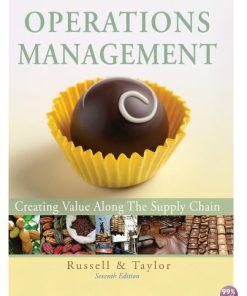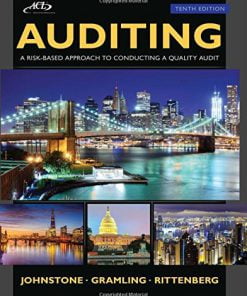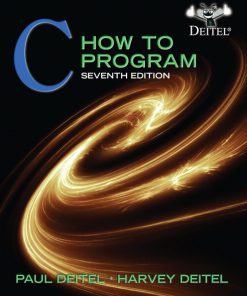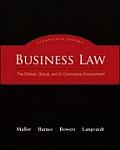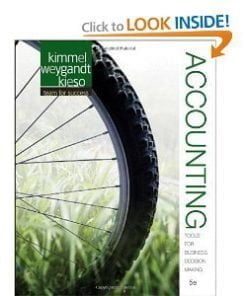Solution Manual for Organic Structural Spectroscopy, 2/E 2nd Edition Joseph B. Lambert, Scott Gronert, Herbert F. Shurvell, David Lightner, Robert Graham Cooks
$35.00 Original price was: $35.00.$26.50Current price is: $26.50.
Solution Manual for Organic Structural Spectroscopy, 2/E 2nd Edition Joseph B. Lambert, Scott Gronert, Herbert F. Shurvell, David Lightner, Robert Graham Cooks
Solution Manual for Organic Structural Spectroscopy, 2/E 2nd Edition Joseph B. Lambert, Scott Gronert, Herbert F. Shurvell, David Lightner, Robert Graham Cooks digital download immediately after payment is complete.
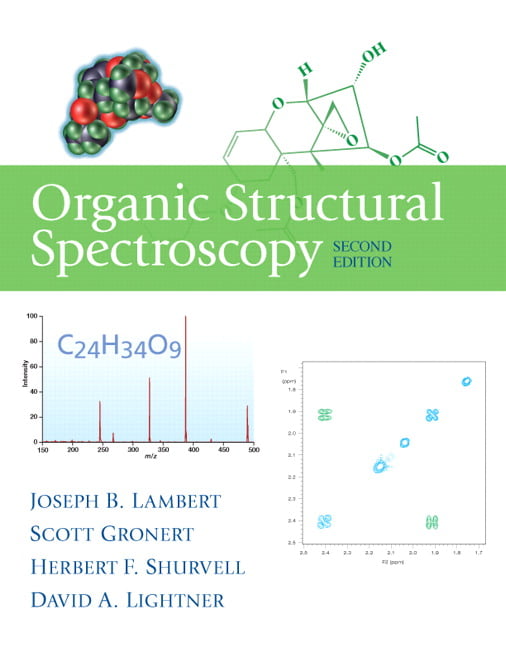
Product details:
- ISBN-10 : 0321592565
- ISBN-13 : 978-0321592569
- Author: Joseph B. Lambert
Ideal for any practicing or future organic chemist or biochemist, Organic Structural Spectroscopypresents the fundamentals of all four principal spectroscopic methods: nuclear magnetic resonance spectroscopy, mass spectrometry, infrared spectroscopy, and ultraviolet-visible spectroscopy. Each topic is examined in depth by an experienced author who is a practicing expert in that area. The material begins at the most elementary level and progresses to the level required for organic research. Among many other enhancements, the Second Edition offers an entirely new discussion of mass spectrometry, with comprehensive coverage of new ionization and fragmentation methods, and treatment of NMR from the basics to advanced 2D methods.
Table contents:
Chapter 1 Introduction
1-1 The Spectroscopic Approach to Structure Determination
1-2 Contributions of Different Forms of Spectroscopy
1-3 The Electromagnetic Spectrum
1-4 Molecular Weight and Molecular Formula
1-5 Structural Isomers and Stereoisomers
Problems
Part I NUCLEAR MAGNETIC RESONANCE SPECTROSCOPY
Chapter 2 Introduction
2-1 Magnetic Properties of Nuclei
2-2 The Chemical Shift
2-3 Excitation and Relaxation
2-4 Pulsed Experiments
2-5 The Coupling Constant
2-6 Quantification and Complex Splitting
2-7 Commonly Studied Nuclides
2-8 Dynamic Effects
2-9 Spectra of Solids
2-10 Experimental Methods
Problems
Tips on Solving NMR Problems
Bibliography
Chapter 3 The Chemical Shift
3-1 Factors That Influence Proton Shifts
3-2 Proton Chemical Shifts and Structure
3-3 Medium and Isotope Effects
3-4 Factors That Influence Carbon Shirts
3-5 Carbon Chemical Shifts and Structure
3-6 Tables of Chemical Shifts
Problems
Further Tips on Solving NMR Problems
Bibliography
Chapter 4 The Coupling Constant
4-1 First-Order Spectra
4-2 Chemical and Magnetic Equivalence
4-3 Signs and Mechanisms
4-4 Couplings over One Bond
4-5 Geminal Couplings
4-6 Vicinal Couplings
4-7 Long-Range Couplings
4-8 Spectral Analysis
4-9 Second-Order Spectra
4-10 Tables of Coupling Constants
Problems
Bibliography
Chapter 5 Further Topics in One-Dimensional NMR
5-1 Spin-Lattice and Spin-Spin Relaxation
5-2 Reactions on the NMR Time Scale
5-3 Multiple Resonance
5-4 The Nuclear Overhauser Effect
5-5 Spectral Editing
5-6 Sensitivity Enhancement
5-7 Carbon Connectivity
5-8 Phase Cycling, Composite Pulses, and Shaped Pulses
Problems
Bibliography
Chapter 6 Two-Dimensional NMR
6-1 Proton-Proton Correlation Through Coupling
6-2 Proton-Heteronucleus Correlation
6-3 Proton-Proton Correlation Through Space or Chemical Exchange
6-4 Carbon-Carbon Correlation
6-5 Higher Dimensions
6-6 Pulsed Field Gradients
6-7 Summary of Two-Dimensional Methods
Problems
Bibliography
Part II MASS SPECTROMETRY
Chapter 7 Instrumentation and Theory
7-1 Introduction
7-2 Ionization Methods
7-3 Mass Analysis
7-4 Sample Preparation
Chapter 8 Ion Activation and Fragmentation
8-1 Basic Principles
8-2 Methods and Energetics
8-3 Functional Groups
Chapter 9 Structural Analysis
9-1 Molecular Weights
9-2 Molecular Formula
9-3 Structures from Fragmentation Patterns
9-4 Polymers
Chapter 10 Quantitative Applications
10-1 Quantification of Analytes
10-2 Thermochemistry
Part III VIBRATIONAL SPECTROSCOPY
Chapter 11 Introduction
11-1 Introduction
11-2 Vibrations of Molecules
11-3 Infrared and Raman Spectra
11-4 Units and Notation
11-5 Infrared Spectra: Dispersive and Fourier Transform
11-6 Sampling Methods for Infrared Transmission Spectra
11-7 Raman Spectroscopy
11-8 Raman Sampling Methods
11-9 Depolarization Measurements
11-10 Infrared Reflection Spectroscopy
Problems
Bibliography
Chapter 12 Group Frequencies
12-1 Introduction
12-2 Factors Affecting Group Frequencies
12-3 Infrared Group Frequencies
12-4 Raman Group Frequencies
12-5 Preliminary Analysis
12-6 The CH Stretching Region (3340-2700 cm-1)
12-7 The Carbonyl Stretching Region (1850-1650 cm-1)
12-8 Aromatic Compounds
12-9 Compounds Containing Methyl Groups
12-10 Compounds Containing Methylene Groups
12-11 Unsaturated Compounds
12-12 Compounds Containing Oxygen
12-13 Compounds Containing Nitrogen
12-14 Compounds Containing Phosphorus and Sulfur
12-15 Heterocyclic Compounds
12-16 Compounds Containing Halogens
12-17 Boron, Silicon, Tin, Lead, and Mercury Compounds
12-18 Isotopically Labeled Compounds
12-19 Using the Literature on Vibrational Spectroscopy
Problems
Bibliography
Part IV ELECTRONIC ABSORPTION SPECTROSCOPY
Chapter 13 Introduction and Experimental Methods
13-1 Introduction
13-2 Measurement of Ultraviolet-Visible Light Absorption
13-3 Quantitative Measurements
13-4 Electronic Transitions
13-5 Experimental Aspects
Problems
Bibliography
Chapter 14 Structural Analysis
14-1 Isolated Chromophores
14-2 Conjugated Chromophores
14-3 Aromatic Compounds
14-4 Important Naturally Occurring Chromophores
14-5 The Woodward-Fieser Rules
14-6 Steric Effects
14-7 Solvent Effects and Dynamic Equilibria
14-8 Hydrogen Bonding Studies
14-9 Homoconjugation
14-10 Charge Transfer Band
14-11 Worked Problems
Problems
Bibliography
Chapter 15 Integrated Problems
People also search:
organic chemistry 2 spectroscopy
organic structures from spectra
|
an organic substance
an organic sample is analyzed and shown
rganic structures from 2d nmr spectra pdf
|
Related products
Solution Manual
Solution Manual
Auditing A Risk Based-Approach to Conducting a Quality Audit Johnstone 10th Edition Solutions Manual
Solution Manual
Solution Manual
Solution Manual
International Accounting Doupnik 4th Edition Solutions Manual
Solution Manual
Solution manual for Accounting: Tools for Business Decision Making Kimmel Weygandt Kieso 5th Edition




